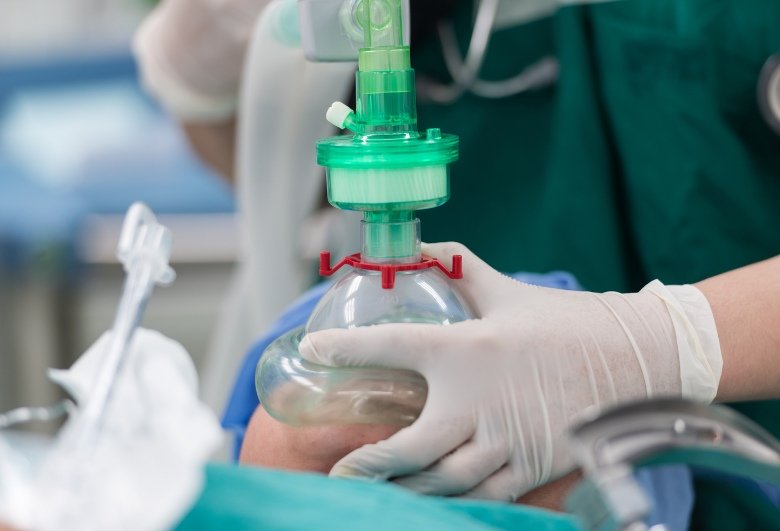Anesthesiology Department
Safe. Skilled. Compassionate. At Jeevandan Health, Patna, our Department of Anaesthesiology plays a vital role in ensuring patient safety and comfort before, during, and after every surgical and interventional procedure. With a team of highly skilled anaesthesiologists, advanced monitoring systems, and modern techniques, we deliver world-class anaesthesia and pain management services tailored to each patient’s needs.

What is anesthesia?
Anesthesia is a medical treatment that keeps you from feeling pain during procedures or surgery. The medications anesthesiologists and other healthcare providers use to block pain are called anesthetics.
Different types of anesthesia work in different ways. Some anesthetic medications numb certain parts of your body, while other medications numb your brain to induce sleep for more invasive surgical procedures, like those within your head, chest or abdomen.
Anesthesiologists have important responsibilities before, during and after a surgery or procedure:
- Before surgery: Your anesthesiologist is responsible for assessing your health and test results, your fitness for the planned surgery and determining the safest anesthesia plan for you.
- During surgery: Your anesthesiologist monitors your vital signs during surgery, manages your medical conditions, and administers fluids, blood products and medications to support your bodily functions, such as the function of your heart, lungs and kidneys. They may work alone or with an anesthesia care team that may consist of nurse anesthetists or physician anesthesiologists in training.
- After surgery: Your anesthesiologist is responsible for your wellbeing after surgery while you’re recovering from the effects of anesthesia. They’re typically the healthcare provider who decides when you have recovered from the effects of anesthesia and are ready to go home or go to another room in the hospital
Our Services
The department provides a wide range of anaesthesia and critical care support:
Pre-operative Evaluation & Optimisation
- Thorough patient assessment to ensure safe surgery
- Risk evaluation and personalised anaesthesia planning
Types of Anaesthesia
- General Anaesthesia – For major surgeries with complete unconsciousness
- Regional Anaesthesia – Spinal, epidural, and nerve blocks for pain-free surgery without full unconsciousness
- Sedation & Local Anaesthesia – For minor procedures and diagnostic interventions
Intraoperative Care
- Continuous monitoring of vital signs
- State-of-the-art anaesthesia machines and safety protocols
- Multidisciplinary coordination with surgeons and nurses
Post-operative Care & Pain Management
- Post Anaesthesia Care Unit (PACU) for smooth recovery
- Acute and chronic pain management services
- Advanced techniques like epidural analgesia, nerve blocks, and patient-controlled analgesia
Critical Care & Emergency Support
- 24×7 anaesthesia support for trauma, emergency surgeries, and ICU patients
- Airway management and advanced life support in critical situations
Technology & Expertise
- Modern Dräger Anaesthesia Workstations in all 5 modular OTs
- Advanced monitoring for heart, brain, and lung functions
- Safe drug protocols adhering to international standards
- Highly experienced anaesthesiologists available round the clock
some common surgeries and procedures that require an anesthesiologist?
Most surgeries and procedures generally require some type of anesthesia and the expertise of an anesthesiologist. The following are the types of anesthesia used by an anesthesiologist:
- General anesthesia.
- Sedation.
- Regional anesthesia.
If you need a local anesthetic for a minor procedure, the healthcare provider performing the procedure will often give it to you.
Common surgeries that require general anesthesia (being unconscious) include:
- Head or back surgery.
- Heart surgery.
- Lung surgery.
- Surgical procedures in your abdomen.
Common procedures that typically require regional anesthesia (numbing a large area of your body) with a spinal, epidural or regional anesthesia block (of an arm or a leg) include:
- Hip or knee surgery.
- Hand or foot surgery.
Common procedures that typically require IV (intravenous) sedation (medication to make you feel relaxed with varying levels of consciousness) include the following, which may or may not involve a local anesthetic (numbing of the area):
- Bronchoscopy.
- Colonoscopy.
- Cystoscopy.
- Dental surgery.
- Minor bone fracture repair.
- Minor skin surgery.
- Plastic or reconstructive surgery.
- Upper endoscopy.
Anesthesiologists also perform epidurals to manage the pain of childbirth for vaginal delivery and provide anesthesia for a cesarean birth (C-section).Our Commitment
At Jeevandan Health, patient safety is our top priority. The Department of Anaesthesiology ensures that every patient receives personalised, safe, and compassionate care at every step of their surgical journey.



